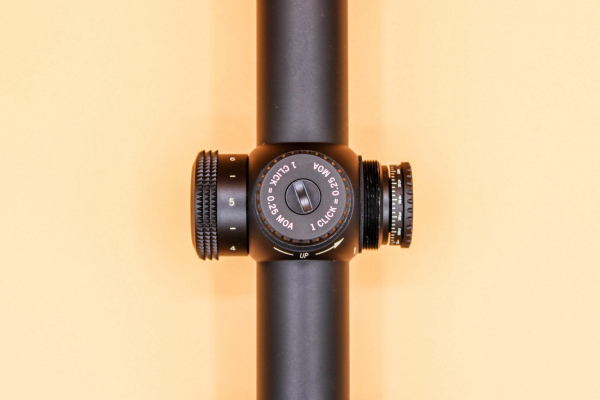Today’s feature is from our companion service THE OPTICS WIRE.
Among all areas in the gun and related gear world, optics have advanced the most over the last twenty-plus years. With the rise of PRS (Precision Rifle Series), long-range hunting, and newer, more capable cartridges, shooters now demand more from their optics. That’s why using riflescopes often requires a more in-depth understanding than in previous years. To help users maximize the performance of their optics, let’s start from the beginning.
The Basics
Before diving into the details of riflescopes, a few basic points need to be covered. A scope consists of three optical components that need to be defined. First, the objective is the part of the scope in front of the turrets. The erector is the system that supports the objective and is positioned in front of the eyepiece. Finally, there’s the eyepiece itself. Each optical system contains a series of lenses that direct the image back to the human eye.
Another common term used in optics is aberration to better understand how light transmits on its way to your eye. Aberration is the failure of light rays to converge at one focus point because of limitations or defects in a lens. Essentially, when light hits the first lens of a riflescope, the light begins to bend and refract in undesirable ways. A good scope uses tools to correct aberrations, creating a clearer, brighter target picture.
Finally, there’s the focal plane. The reticle of an optic can be placed in one of two different focal planes—either forward of the turret assembly or rearward. A reticle in the rear — or second — focal plane maintains a constant size as it the lens is zoomed in or out. Front—or first—focal plane optics have reticles that increase and decrease in size proportionally as magnification is increased and decreased. For more on this, see our earlier article here.
Units of Measure
The primary focus of this Optics 101 article focuses (sorry) on the units of measure scopes use. Either of the two primary types can be used effectively as long as you understand them and can put them to work in the field. There are many myths surrounding the two units of measure, but it’s not that complicated. Let’s define them so you can choose the best one for how you shoot.
To start, most users are familiar with optics that utilize ¼ minute of angle (MOA) adjustments at 100 yards. However, milliradians (MILs), which are typically divided into 1/10 increments, are gaining popularity. In simple terms, MOA and MILS are two different methods of dividing a circle.
MOA
A circle is 360 degrees, with each degree divided into 60 minutes. That means each circle is made up of 21,600 minutes. At a hundred yards, 1 degree measures 62.83 inches. One MOA — minute of angle — then, is 1/60 of that, which is 1.047 inches.
Normally, MOA is rounded down to an even 1 inch. For most shooting, approximating is fine. For example, at 1000 yards, 1 MOA is approximately 10 inches. The exact number is 10.47 inches—a relatively negligible difference.

Vortex Crossfire HD with MOA turrets.
MILs
A common misunderstanding involving MILs — short for milliradians, and some call it MRAD — is that it’s a metric-only system. That isn’t entirely true. A radian is a metric form of angular measure dividing radians in a circle. Conversely, milli means 1/1000, so 1 milliradian — one MIL — is 1/1000 of a radian.
One radian is equal to 57.3 degrees. So 360 degrees — a full circle — divided by 57.3 equals 6.2832 MILs. There are 1,000 MILs in a milliradian and 6,2382 MILs in a full circle.
MILs are then divided into tenths for precise measurement and adjustment. At 100 yards, 1 MIL is 3.6 inches, so a tenth of a MIL is .36 inches. At 100 meters, 1 MIL equals 10 centimeters, so .1 MIL is 1 centimeter. Zooming out, 1 MIL at a thousand yards equals one yard, and 1 MIL at a thousand meters equals — you guessed it — one meter.
MILs may be a metric unit of measure, but the system works with both standard and metric units.

Vortex Strike Eagle with MIL Turrets.
Putting it to Use
MOA is still the most common measurement system used in optics, but MILs are quickly gaining ground as more shooters engage in long-range shooting.
Originally, MILs were used to offer quick, on-the-fly range estimation. Essentially, if the shooter knows the approximate size of the target downrange, they can use a MIL-based reticle to measure the target’s height. Then that information is input into the formula Range = size of target / MILs. Nowadays, though, we rely on rangefinders to determine distance. With the advancement of phone-based ballistic calculators, shooters can easily use that information in conjunction with their reticle to holdover elevation at different ranges.
If the elevation drop is 2.7 MILs at the target’s range, the shooter can either dial that adjustment on the elevation turret or holdover 2.7 MILs in the scope’s reticle. The same thing can be done with MOA. However, with MILs being divided into tenths, I think holding in MILs can be faster—but that’s largely subjective.
Zooming Out
This article is the first in a series exploring various aspects of optics. The minute of angle and milliradian measurement systems can be confusing for beginners, as are lots of things in the optics world. In an upcoming article, we will delve deeper into this topic and discuss how MOA and MIL measurements are used in reticles for various applications. Stay tuned.
— Cory Ross
To receive regular optics news and information – or to subscribe to any of our services, go to this link and sign up.